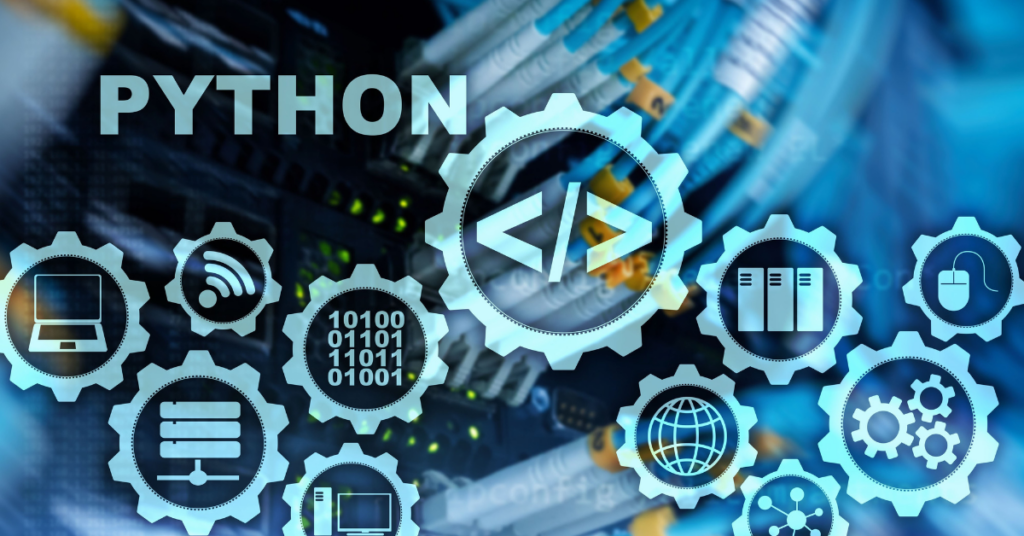A Beginner’s Guide to Python: Meaning, How to Learn, and Use It

Computers can’t understand human language. Hence, humans must learn the computer language, also known as programming language, to effectively utilize computers and give them instructions for specific tasks. There are a ton of programming languages out there, so choosing just one to learn can be quite a challenge. When it comes to picking one to learn, though, Python is the go-to option for many coders. It has English language-like syntax that’s easy to read and understand. Furthermore, it’s one of the top five most widely used programming languages in the world. According to a recent Statista study, 49.28% of developers worldwide use Python in their day-to-day activities. In this article, we discuss what is Python, what is the use of Python, and how to learn this programming language.
In this blog, you’ll learn:
- What is Python Programming Language, and Why Learn to Use Python?
- What is Python Used for?
- How Can You Study Python?
- Frequently Asked Questions (FAQs)
- Become Industry-Ready With Emeritus
What is Python Programming Language, and Why Learn to Use Python?
So, exactly what is Python? To put it simply, Python is an object-based programming language used in machine learning, artificial intelligence, data analysis, and web development. It is popular for its clear and easy-to-understand English language-like syntax, powerful standard library, and dynamic semantics. The main focus of this programming language is to make it easier for developers to read and understand, which also reduces lines of code.
Python was introduced by Guido van Rossum in the late 1980s. Its design philosophy places a strong emphasis on the utilization of large white space and code readability. This means that Python is a very understandable language that is excellent for both novice and seasoned developers.
Here are two main reasons for learning Python:
- Having a broader understanding of Python is key to establishing one’s presence in this largely digital and increasingly automated world. For instance, Python serves as a valuable tool for automating monotonous and labor-intensive tasks, such as batch file renaming, file format conversions, and work report generation and updates. This automation allows professionals time to concentrate on more significant matters rather than manual work.
Python-related professions are currently quite lucrative. For instance, a data scientist earns between ₹12,00,000 to ₹12,75,000 annually in India.
ALSO READ: Top 18 Python Pattern Programs
What is Python Used for?
Now that you’ve learned the fundamentals and importance of Python, let’s delve into the diverse applications and understand what is the use of Python in various fields:
1. Data Analysis
Data analysis is the process of presenting data in an easily digestible format. Most data scientists and analysts prefer the use of Python language for data analysis as it successfully creates an effective visual representation of complex data sets, and analyses, stores, and manages data effectively as well.
2. Machine Learning and Artificial Intelligence
Much like its role in data science, Python plays a significant role in machine learning by processing data for machine learning and artificial intelligence apps. Moreover, Python has many open-source libraries such as TensorFlow, enabling the creation of machine learning models swiftly and with minimal code.
3. Scripting and Automation
Python is a great option for scripting and automation jobs because of its cross-platform interoperability and ease of use. It is frequently used to automate data processing, system management, and tedious, repetitive tasks.
Scripting refers to writing the code used to create these automated procedures. With Python, automation of tasks such as simple calculations, checking for problems in files, and eliminating data duplication is possible.
Even beginners can use Python to out basic computer operations. They can rename files, locate and download content from the Internet, or schedule text messages or emails.
4. Testing and Prototyping Software
Python is a popular tool for software prototypes and testing. Developers can swiftly create and test software components and functionalities thanks to its ease of use and rapid development capabilities. Python can help with software development chores such as testing, issue tracking, and building control. Software developers can use Python to automate the testing of new features or products. Python-based software testing tools such as Green and Requestium are utilized.
5. Web Development
When creating the front end of a website, developers generally use languages such as HTML, CSS, and JavaScript. However, Python is popular for the back end because it offers built-in tools for tasks like sharing data with servers, data processing, database access, URL management, content handling, and security. Google, Facebook, Instagram, YouTube, Dropbox, and Reddit use Python to build their websites and applications.
ALSO WATCH: Analytics in E-commerce by Ratnakar Pandey, Lead–ML & Analytics, Amazon Customer Services India
How Can You Study Python?
Have you ever wondered, ‘How can I learn the Python language?’ or ‘How do I learn Python?’ If yes, then here’s your answer.
1. Online Courses and Tutorials
Dive into the world of online courses and tutorials for a seamless learning experience. While numerous beginner-friendly options are available, it’s crucial to select the best ones to accelerate your understanding of the language. Explore Emeritus’ artificial intelligence and machine learning courses, designed to cater to your learning needs and guide you wherever you are on your educational journey.
2. Publications
Explore a rich array of publications dedicated to teaching Python, spanning from beginner to advanced levels. Notable books like “Automate the Boring Stuff With Python: Practical Programming for Total Beginners” by Al Sweigart and “Fluent Python: Clear, Concise, and Effective Programming” by Luciano Ramalho serve as exemplary resources for learners at various stages. You can find out about more resources here.
3. YouTube & Video Tutorials
Explore the vast repository of Python-related lectures and tutorials on YouTube, where a diverse range of content caters to learners of every ability level. From beginner-friendly introductions to advanced coding techniques, the platform offers a dynamic and accessible way to enhance your Python skills through engaging video content.
ALSO WATCH: The Road to Cracking Data Science Interviews by Nithesh Baheti
Frequently Asked Questions (FAQs)
1. What Type of Language is Python?
Still unsure about “what type of language is Python?” Simply put, Python is a beginner-friendly programming language known for its clear syntax and extensive libraries. It’s an interpreted, object-oriented, high-level language with dynamic semantics. This makes it ideal for various tasks, including web development, data science, machine learning, and automation.
2. Why Is Python So Popular?
Here are a few reasons that add to Python’s popularity:
- Python is easy to learn, write, and read due to English language-like syntax
- It’s an open-source programming language, meaning, it’s free for everyone
- Python provides an extensive standard library and many additional modules
- It’s constantly being developed, improved, and expanded
- It can be used for solving advanced problems in various fields
3. What Jobs Need Python?
Many professionals prefer the use of Python language directly for their daily work, including:
- Data Scientist
- Data Analyst
- Data Engineer
- Machine Learning Engineer
- Data Architect
- Full-Stack Web Developer
- Back-End Web Developer
- DevOps Engineer
- Software Engineer
4. How do I Start Learning Python?
- Understand why you want to learn Python.
- Begin with the fundamental elements of Python, such as syntax, variables, and basic data types.
- Install Python and set up your development environment.
- Move to intermediate topics like functions, loops, and data structures to improve your learning.
- Apply your knowledge through practical exercises to reinforce theoretical concepts and develop problem-solving skills.
- Engage in structured projects to integrate various skills and deepen your language understanding.
- Gradually increase the complexity of your projects to improve your expertise.
- Consistently tackle more challenging projects.
ALSO READ: What is Data Analytics – Know Its Types, Applications and Career Opportunities
Become Industry-Ready With Emeritus
If you are looking to enhance your understanding of data science and machine learning tools and techniques, you’re at the right place. Emeritus offers various data science and analytics courses that give learners hands-on experience about different data science, artificial intelligence, and machine learning tools. Additionally, these courses will give learners knowledge about data management, exploratory data analysis, machine learning, and deep learning.
Write to us at content@emeritus.org





